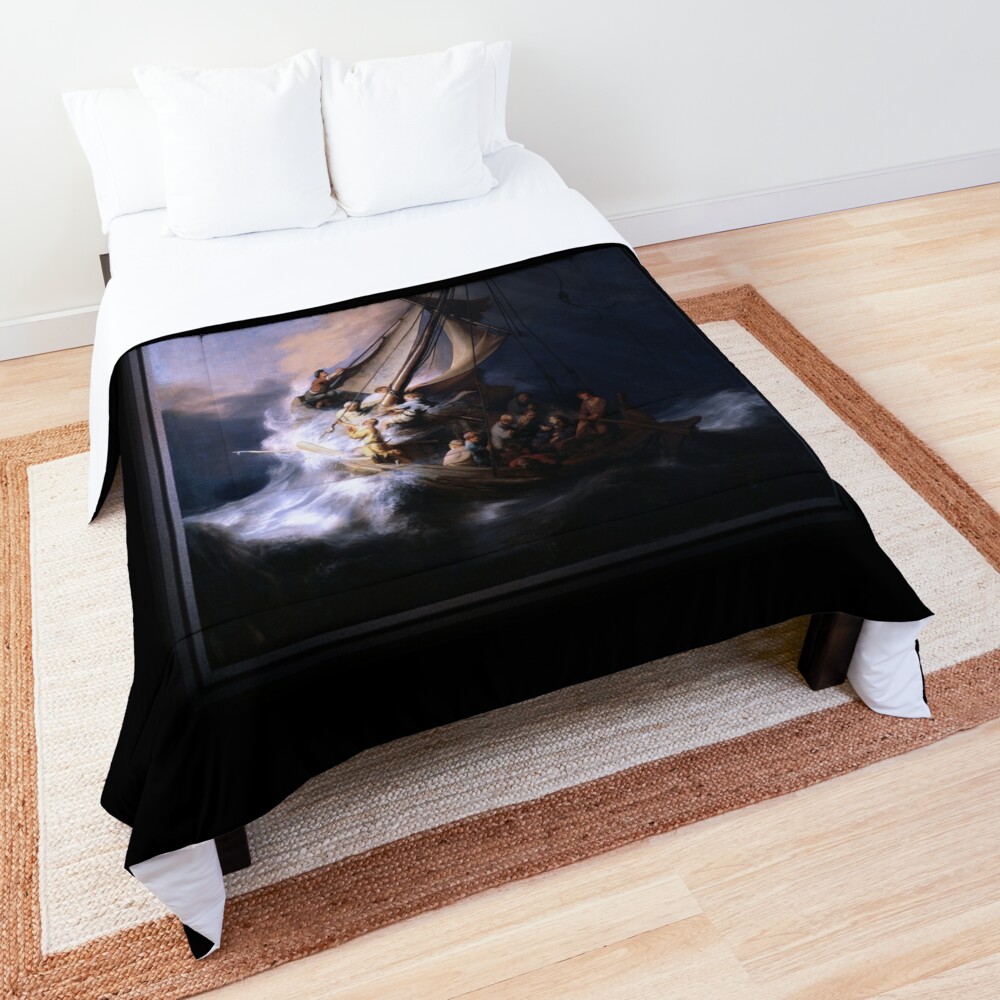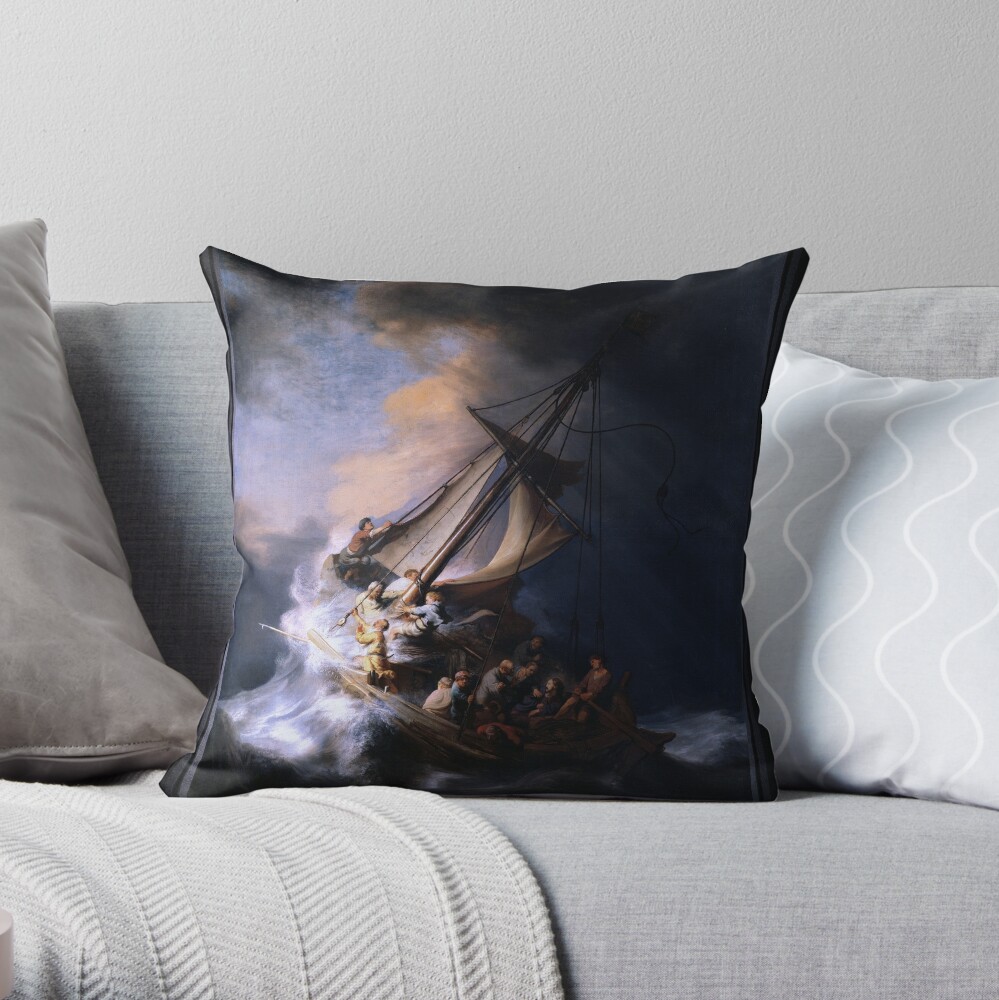
The Storm on the Sea of Galilee
The Storm on the Sea of Galilee c1633 by Dutch Painter Rembrandt van Rijn (1606 – 1669); sem einnig var teiknari og prentsmiður; is considered to be one of the worlds greatest visual artist in the history of art
This painting by Rembrandt is a dramatic and very dynamic image of Jesus and his Disciples out at sea in a sailboat as a ranging storms crashes against the boat with some of the disciples in a state of panic and others looking toward Jesus as to say – Save Us.
The Storm on the Sea of Galilee is a retouched digital art old masters reproduction of a public domain image that is available as a rolled print online.
Upplýsingar að neðan Frá Wikipedia.org
The new Dutch Republic was the most prosperous nation in Europe and led European trade, science, and art. The northern Netherlandish provinces that made up the new state had traditionally been less important artistic centres than cities in Flanders in the south. The upheavals and large-scale transfers of population of the war, and the sharp break with the old monarchist and Catholic cultural traditions, meant that Dutch art had to reinvent itself. The painting of religious subjects declined sharply, but a large new market for many secular subjects developed.
Although Dutch painting of the Golden Age is included in the general European period of Baroque painting, and often shows many of its characteristics, most lacks the idealization and love of splendour typical of much Baroque work, including that of neighbouring Flanders. Most work, including that for which the period is best known, reflects the traditions of detailed realism inherited from Early Netherlandish painting.
A distinctive feature of the period is the proliferation of distinct genres of paintings,[2] with the majority of artists producing the bulk of their work within one of these. The full development of this specialization is seen from the late 1620s, and the period from then until the French invasion of 1672 is the core of Golden Age painting. Artists would spend most of their careers painting only portraits, tegundaratriði, landslag, seascapes and ships, or still lifes, and often a particular sub-type within these categories. Many of these types of subject were new in Western painting, and the way the Dutch painted them in this period was decisive for their future development.





